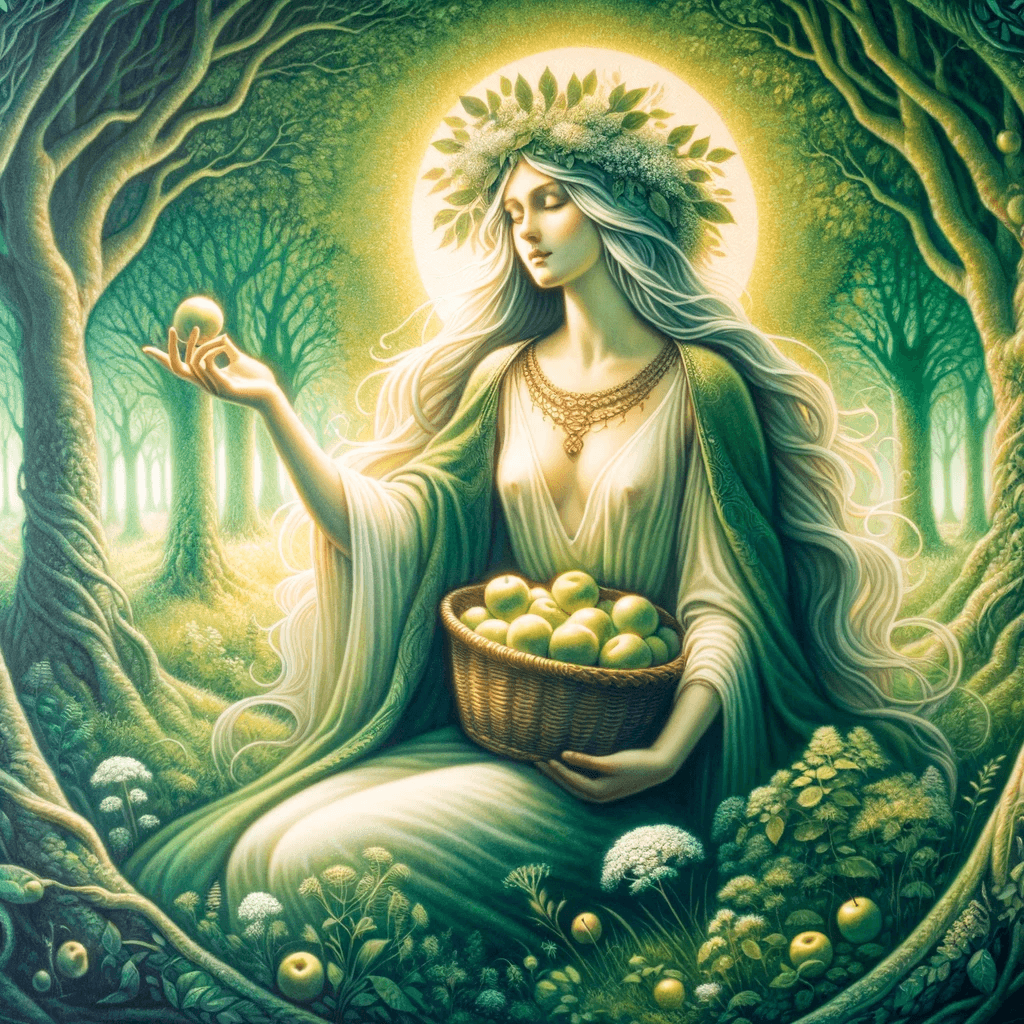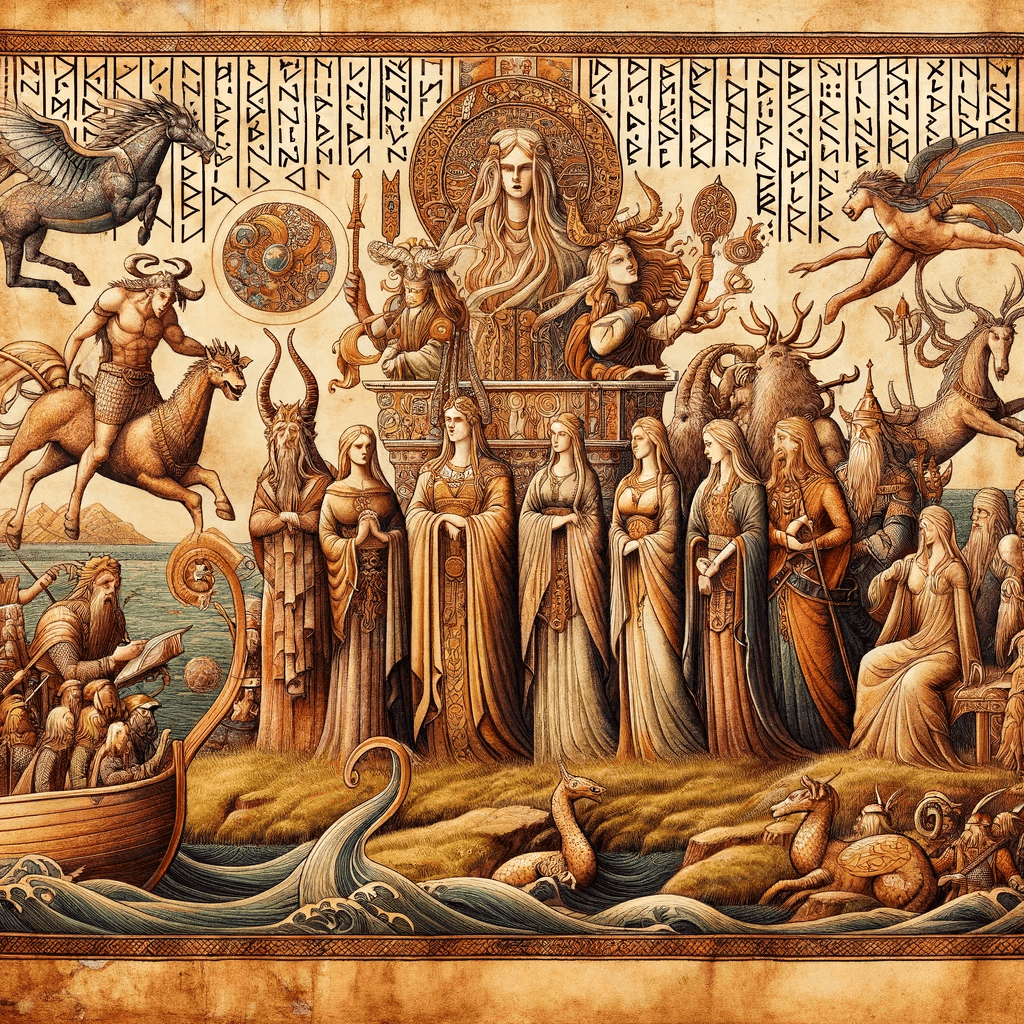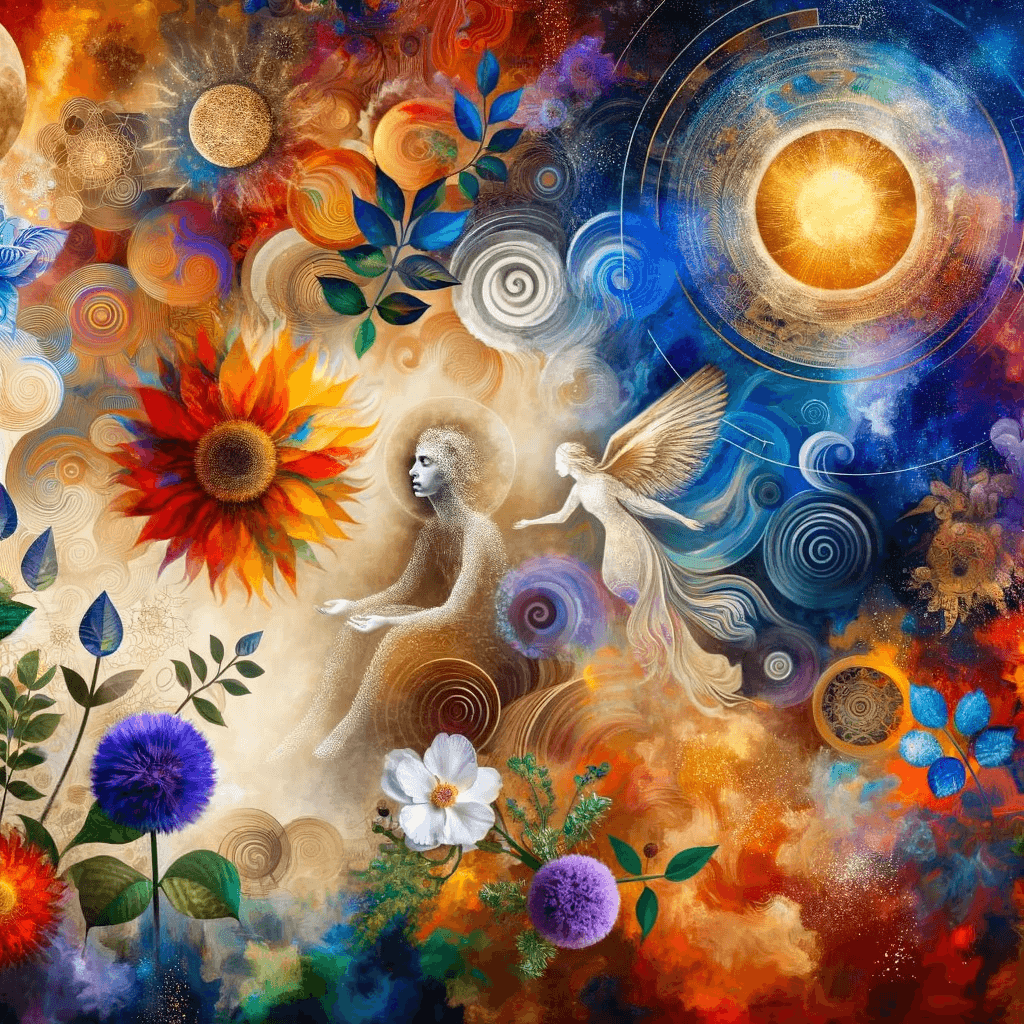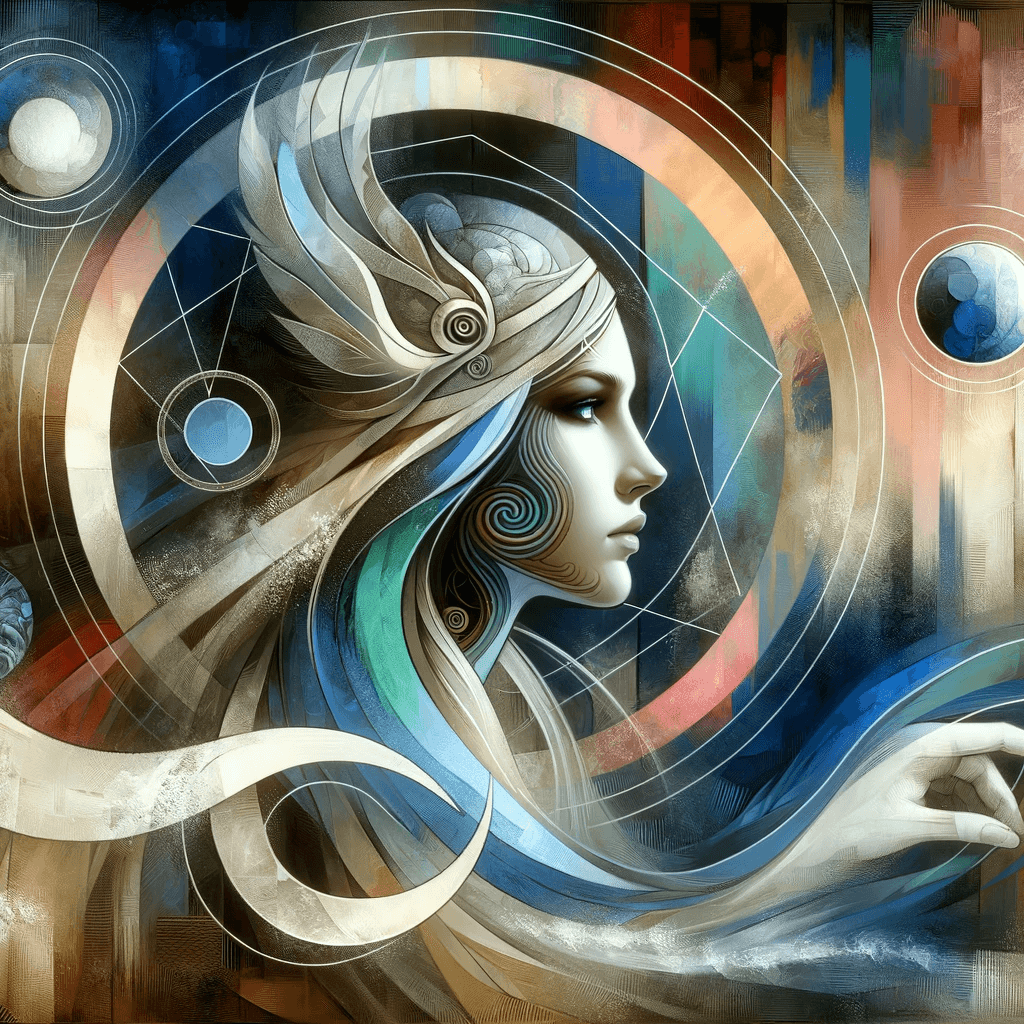In the rich tapestry of Norse mythology, Idun (also known as Idunn) stands as a figure of immense significance, embodying the quintessence of youth and vitality. Central to the pantheon of Norse gods, Idun is revered not just as a goddess but as the custodian of the magical apples that bestow eternal youthfulness upon the gods. Her role extends far beyond mere myth; it serves as a pivotal anchor in understanding the broader Norse culture and its intrinsic values. This article aims to delve into the depths of Idun’s story, unraveling her origins, exploring the multifaceted layers of her significance, and tracing the profound impact she has had on Norse mythology. By examining Idun’s narrative, we uncover not just a mythological figure, but a symbol deeply ingrained in the cultural and spiritual fabric of the Norse people, offering a unique lens through which to view their world.
| Origin | Norse Mythology |
| Deity Type | Goddess of Youth and Rejuvenation |
| Appearance | Often depicted as a youthful and radiant goddess |
| Role | Guardian of the golden apples of youth, which grant immortality |
| Apples of Youth | Her apples are crucial to the gods’ continued vitality and longevity |
| Cultural Impact | Revered as a symbol of vitality, rejuvenation, and the cycle of life |
| Depictions | Featured in various Norse myths and sagas, especially those involving the golden apples |
1. Idun in Norse Lore
Norse mythology, a cornerstone of ancient Scandinavian culture, provides a fascinating window into the beliefs and traditions of the Norse people. This mythological framework, passed down through generations, is richly populated with gods, giants, and magical creatures, each playing a distinct role in the cosmic order. At the heart of these stories is the Poetic Edda and the Prose Edda, two of the most crucial primary sources that offer insights into this mythic realm.
The Poetic Edda, a collection of Old Norse poems from the Icelandic medieval manuscript Codex Regius, is a treasure trove of mythological and heroic tales. Within its verses, Idun is referenced, albeit sparingly, yet her significance is unmistakable. Similarly, the Prose Edda, written by the Icelandic scholar Snorri Sturluson, provides a more structured narrative of Norse myths, including those of Idun. These texts not only introduce us to Idun and her role in maintaining the gods’ eternal youth but also contextualize her within the broader panorama of Norse cosmology.

Through these ancient manuscripts, we gain a direct connection to the Norse world, allowing us to understand how Idun’s story was perceived and valued by the people who cherished these myths. They serve as both a historical and cultural guide, shedding light on the nuances of Norse mythology and offering a detailed account of its characters, including the vital role of Idun.
2. The Story of Idun: Keeper of the Golden Apples
In the pantheon of Norse mythology, Idun’s tale is a captivating narrative of rejuvenation and cunning. Known as the keeper of the golden apples, Idun’s role was pivotal in sustaining the gods’ youth and vigor. These apples were not ordinary fruit; they were magical, imbued with the power to renew the youth of the Aesir, the principal group of Norse gods. Idun’s guardianship of these apples made her an essential figure in the divine realm.
The most notable story involving Idun is her abduction and the consequential aging of the gods. Lured out of Asgard, the realm of the gods, by the trickery of Loki, the god of mischief, Idun was kidnapped by the giant Thiazi. Her absence from Asgard had immediate and severe consequences: without her apples, the gods began to age rapidly, losing their former strength and youth.

The gods, desperate to regain their vitality, coerced Loki into rescuing Idun. Loki, who often played the role of both the problem-maker and the problem-solver in Norse myths, transformed Idun into a nut and flew her back to Asgard in the form of a falcon, pursued by Thiazi in eagle form. The gods then lit fires around Asgard, burning Thiazi’s wings and ensuring Idun’s safe return.
This story, rich in symbolism and drama, highlights several key themes prevalent in Norse mythology: the importance of individual roles in maintaining cosmic balance, the constant interplay of cunning and strength, and the cyclical nature of renewal and decay. Idun’s character, portrayed as both vulnerable and indispensable, underscores the interconnectedness of all beings in Norse cosmology. Her abduction and rescue not only reflect the vulnerabilities of the gods but also their resilience and interdependence.
3. Symbolism and Cultural Significance
Idun’s presence in Norse mythology extends beyond her role in the tales; she is a profound symbol embodying concepts vital to Norse culture. Her golden apples are more than magical items; they are metaphors for youth, renewal, and the cyclical nature of life and time. In a culture that valued strength and resilience, the ability to maintain youth and vitality was of utmost importance, and Idun, through her apples, was the key to this cherished state.
The symbolism of Idun and her apples can be interpreted in several layers. Primarily, she represents rejuvenation and the endless cycle of life and death. This is particularly significant in a culture where aging and the loss of strength were inevitable truths. By holding the power to reverse these effects, Idun embodied hope and the perpetual renewal of life.

Moreover, Idun’s role as a nurturer and caretaker aligns with the themes of fertility and sustenance. Just as her apples nourish the gods and keep them young, the earth nourishes humanity. In this regard, Idun can be seen as a personification of the earth’s fertility and abundance, a guardian of life and growth.
Her story also highlights the fragility of balance in the Norse universe. Her abduction leads to the rapid aging of the gods, showcasing how vital her role is in maintaining the natural order. This reflects a broader theme in Norse mythology: the interconnectedness of all elements and the delicate equilibrium that sustains the universe.
4. Idun Across Mythologies: A Comparative Study
Exploring Idun in the context of world mythologies reveals intriguing parallels and contrasts with similar deities and figures. Her role as a nurturer and provider of life-sustaining elements finds echoes in various cultures, yet her unique characteristics set her apart in the Norse mythological landscape.
One notable comparison is with the Greek goddess Hebe, the personification of youth, who served ambrosia to the Olympian gods to grant them immortality. Both Hebe and Idun are central to the gods’ continuous rejuvenation, yet while Hebe’s role is more passive, serving the ambrosia, Idun’s role is more active and fraught with peril, as seen in her abduction and the dramatic consequences it brings.

Another parallel can be drawn with the Hindu goddess Sita, who, like Idun, finds herself abducted and plays a pivotal role in the epic narrative of the Ramayana. Both characters are central to the stories of crisis and resolution in their respective mythologies, and their abductions trigger significant events that define the tales of the gods and heroes around them.
In Egyptian mythology, the goddess Isis shares similarities with Idun. Isis, known for her magical prowess and as a protector of the dead, also embodies the concept of restoration and rebirth, akin to Idun’s role in rejuvenation. However, unlike Idun’s focus on physical rejuvenation, Isis’ restoration theme is more aligned with spiritual rebirth and the afterlife.
5. Idun’s Enduring Legacy in Modern Times
Idun’s influence extends beyond ancient texts and carvings, permeating modern literature, art, and popular culture. Her symbolisms of youth and renewal resonate even in contemporary contexts, offering inspiration across various mediums.
In literature, Idun’s character and her story have been reimagined and retold in numerous works. Modern fantasy novels often draw from the rich well of Norse mythology, with characters like Idun serving as templates for characters who guard life-giving objects or possess rejuvenating powers. Her narrative of abduction and rescue has been a particularly influential motif, replicated in various forms and settings in contemporary storytelling.

The art world, too, has seen Idun’s influence. Her depiction often centers around themes of youth and nature, with artists using her image to represent the eternal beauty and vitality of nature. The golden apples in her care have become symbols of the elusive quest for perpetual youth, a theme that resonates deeply in today’s youth-centric culture.
In popular culture, especially in movies, television series, and video games, elements of Idun’s story are frequently visible. Characters inspired by her, often guardians of vital objects or keepers of secrets crucial to the survival of their worlds, are common in fantasy and science fiction genres. Additionally, the theme of her abduction and the ensuing chaos has been a plot device in several modern narratives, albeit in varied forms.
Moreover, in the realm of comics and graphic novels, Norse mythology has seen a resurgence, with Idun occasionally appearing as a character in these visually rich stories. These adaptations often take creative liberties but retain the core essence of her character – a guardian of something precious and life-sustaining.
6. Conclusion
Throughout the tapestry of Norse mythology, Idun emerges as a pivotal figure, embodying youth, vitality, and the cyclical nature of life. Her guardianship of the magical golden apples and her critical role in maintaining the gods’ youth highlight her significance in the Norse pantheon. Idun’s narrative, from her symbolic importance to her dramatic abduction and rescue, reflects the themes of renewal, vulnerability, and interdependence prevalent in Norse lore. Her character resonates beyond ancient myths, influencing modern literature, art, and popular culture, where her essence is reimagined and celebrated. Idun’s enduring appeal lies in her representation of a universal human desire—the pursuit of youth and vitality. In today’s world, her story continues to inspire, serving as a reminder of the timeless allure of myths and their ability to encapsulate fundamental human experiences and aspirations.
